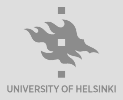Navigating Venice’s Literary Nightscapes through Post-Representational Mapmaking
Abstract
This paper investigates post-representational mapmaking as a co-constitutive element of a research-through-practice experience, namely a phenomenographic drawing session conducted in Venice, Italy. Contributing to a broader geo-literary investigation, the research experience aims to evaluate a creative method developed to collect data about the roles and functions of literary texts in nightscapes’ co-production processes. Nightwalking, drawing phenomenographic sketches and the recollection of (literary) memories are the primary components of a set of repeated actions constituting the method of the research-through-practice experience. Finally, sketches work with an autoethnographic text built around fieldnotes to report as much information as possible. While re-elaborating this research experience, post-representational mapmaking emerged as a relevant tool with which to reorganise and interpret data. During this process, a map—or rather, an open-ended layer of a complex map of Venice’s literary nightscapes—has emerged, allowing for meaningful reflection. On the one hand, the map provides a synoptic outline of the research experience, connecting nightscape sketches and literary memories on a single sheet of paper. On the other, it points out the relevance of hitherto unmapped elements, such as materiality, itinerary and other literary texts, to further develop the analysis of nightscapes’ co-production processes.References
Bille M. and Simonsen K., “Atmospheric practices: On affecting and being affected”, Space and Culture, 24, 2, 2021, pp. 295-309.
Brice S., “Situating skill: contemporary observational drawing as a spatial method in geographical research”, cultural geogra-phies, 25, 1, 2018, pp. 135-158.
Cameron E., “New geographies of story and storytelling”, Progress in Human Geography, 36, 5, 2012, pp. 573-592.
Caquard S. and Cartwright W., “Narrative Cartography: From Mapping Stories to the Narrative of Maps and Mapping”, The Cartographic Journal, 51, 2, 2014, pp. 101-106.
Chatterton P. and Hollands R., Urban Night-scapes: Youth Cultures, Pleasure Spaces and Corporate Power, London, Routledge, 2003.
Crang M., “Rhythms of the City, Temporalised Space and Motion”, in May J. and Thrift N. (Eds.), Timespace Geogra-phies of Temporality, London, Routledge, 2001, pp. 187-207.
Del Casino V.J. and Hanna S.P., “Beyond the ‘binaries’: Methodological intervention for interrogating maps as representational practices”, ACME, 4, 1, 2006, pp. 34-56.
Dunn N., Dark Matters: A Manifesto for the Nocturnal City, Winchester, Zero Books, 2016.
Edensor T., “Illuminated atmospheres: anticipating and reproducing the flow of affective experience in Blackpool”, Environment and Planning, 30, 6, 2012, pp. 1103-1122.
Eldridge A. and Roberts M., “Re-populating the nighttime city: hospitality and gender”, in Henckel D., Thomaier S., Könecke B., Zedda R. and Stabilini S. (Eds.), Space-Time Design of the Public City, London, Springer, 2013, pp. 49-60.
Foote K. and Azaryahu M., “Sense of place”, in Kitchin R. and Thrift N. (Eds.), The International Encyclopaedia of Human Geography, Elsevier, 2009, pp. 96-100.
Hadfield P., “The night-time city. Four modes of exclusion: Reflections on the Urban Studies special collection”, Urban Studies, 52, 3, 2015, pp. 606-616.
Hawkins H., “Creative geographic methods: knowing, representing, intervening. On composing place and page”, cultural geographies, 22, 2, 2015, pp. 247-268.
Kitchin R., “Post-representational cartogra-phy”, Lo Squaderno: Explorations in Space and Society, 15, 2010, pp. 7-12.
Kitchin R. and Dodge M., “Rethinking maps”, Progress in Human Geography, 31, 3, 2007, pp. 331-344.
Le Calvé M. and Gaudin O., “Depicting Berlin’s Atmospheres: Phenomenographic Sketches”, Ambiances. Environnement sensible, architecture et espace urbain, 5, 2019.
Papotti D. and Tanca M., “Geografie letterarie del notturno: qualità degli spazi del buio in alcuni esempi di narrativa italiana del secondo Novecento”, Bollettino della Società Geografica Italiana, 1, 2, 2019, pp. 53-63.
Rossetto T., “Embodying the map. Tourism practices in Berlin”, Tourist Studies, 12, 1, 2012, pp. 28-51.
Rossetto T., “Theorizing maps with literature”, Progress in Human Geography, 38, 4, 2014, pp. 513-530.
Rossetto T., “Semantic ruminations on ‘post-representational cartography’”, International Journal of Cartography, 1, 2, 2015, pp. 151-167.
Shaw R., “Beyond night-time economy: affective atmospheres of the urban night”, Geoforum, 51, 2014, pp. 87-95.
Shaw R., The Nocturnal City, London, Routledge, 2018.
Tanca M., “Cose, rappresentazioni, pratiche: uno sguardo sull’ontologia ibrida della Geografia”, Bollettino della Società Geografica Italiana, 1, 1, 2018, pp. 5-17.
van Liempt I., van Aalst I. and Schwanen T., “Introduction: Geographies of the Urban Night”, Urban Studies, 52, 2015, pp. 407-421.
Vannini P., “Non-representational ethnogra-phy: New ways of animating lifeworlds”, cultural geographies, 22, 2, 2015, pp. 317-327.
Wylie J. and Webster C., “Eye‐opener: Drawing landscape near and far”, Transactions of the Institute of British Geographers, 44, 1, 2019, pp. 32-47.
Downloads
Published
Issue
Section
License
The Author assigns to the Nuova Cultura and to Italian Association of Geography Teachers all rights under copyright that can exist in and to the submitted paper. The Author warrants that the paper and images (photos, maps, graphs etc.) are original and that he/she is the Author of the submitted contribution and its parts; in the case of images taken by other publications, the Author must provide a specific authorization and must pay in advance any copyright.

This work is licensed under a Creative Commons Attribution 4.0 International License.












